Before you throw that pumpkin away, try this awesome DNA science project
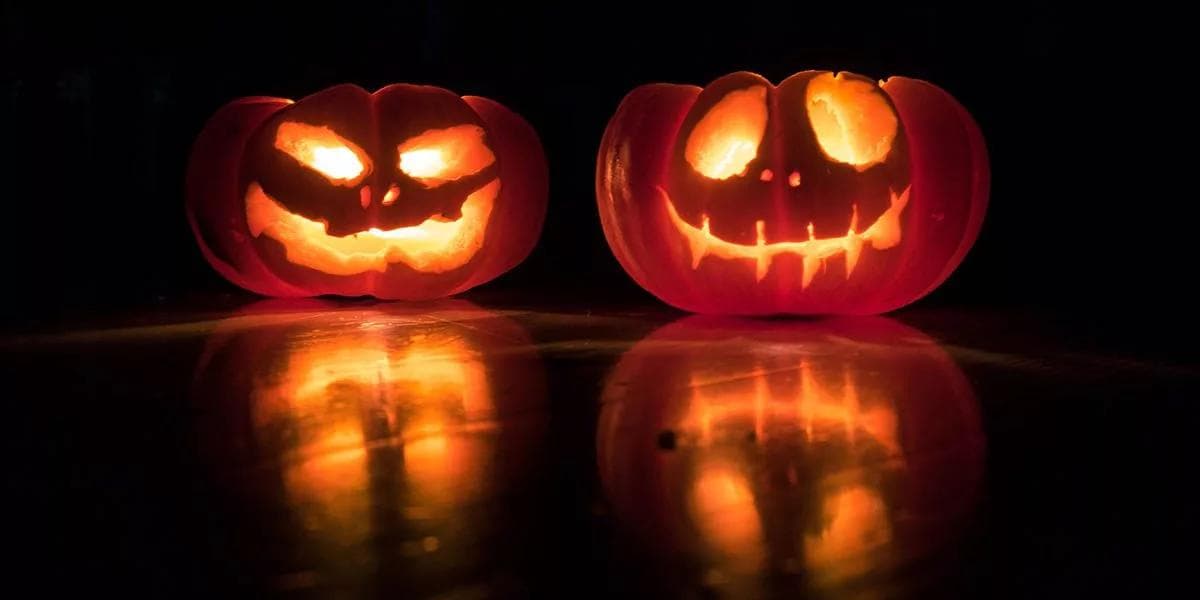
Wondering what to do with that leftover Jack-o’-lantern from Halloween? Don’t throw your pumpkin away just yet, because we’ve got a fun DNA experiment you can try at home!
All living things have DNA, including the food that we eat. A lot of fruits are especially packed with DNA, since many food crops are polyploid—meaning they have multiple copies of their genome in each cell. Strawberries are a popular choice for this demo, but for Halloween, we’ll be extracting extra scary pumpkin DNA.
(Remember to set up a clean workspace, clean up when you’re done, and have adult supervision. Nothing here is more dangerous than standard dishwashing soap and rubbing alcohol—but feel free to wear gloves if your hands are irritated when washing dishes, and safety glasses if you splash a lot when mixing things together!)
Here’s what you’ll need:
- Clear glass or plastic cups
- Dish soap
- Table salt
- Water
- Blender or food processor
- Rubbing alcohol (99% isopropyl alcohol)
- Coffee filters, cheesecloth, or strainer
- Pumpkins or pumpkin pieces
Step 1: Pulverize your pumpkin
To get the DNA out, we’ll need to grind or mash up the pumpkin into a paste. I used a blender, but you could also use a food processor or mortar and pestle. It helps to chop the pumpkin into smaller pieces, and you might need to add some water to help with the blender.
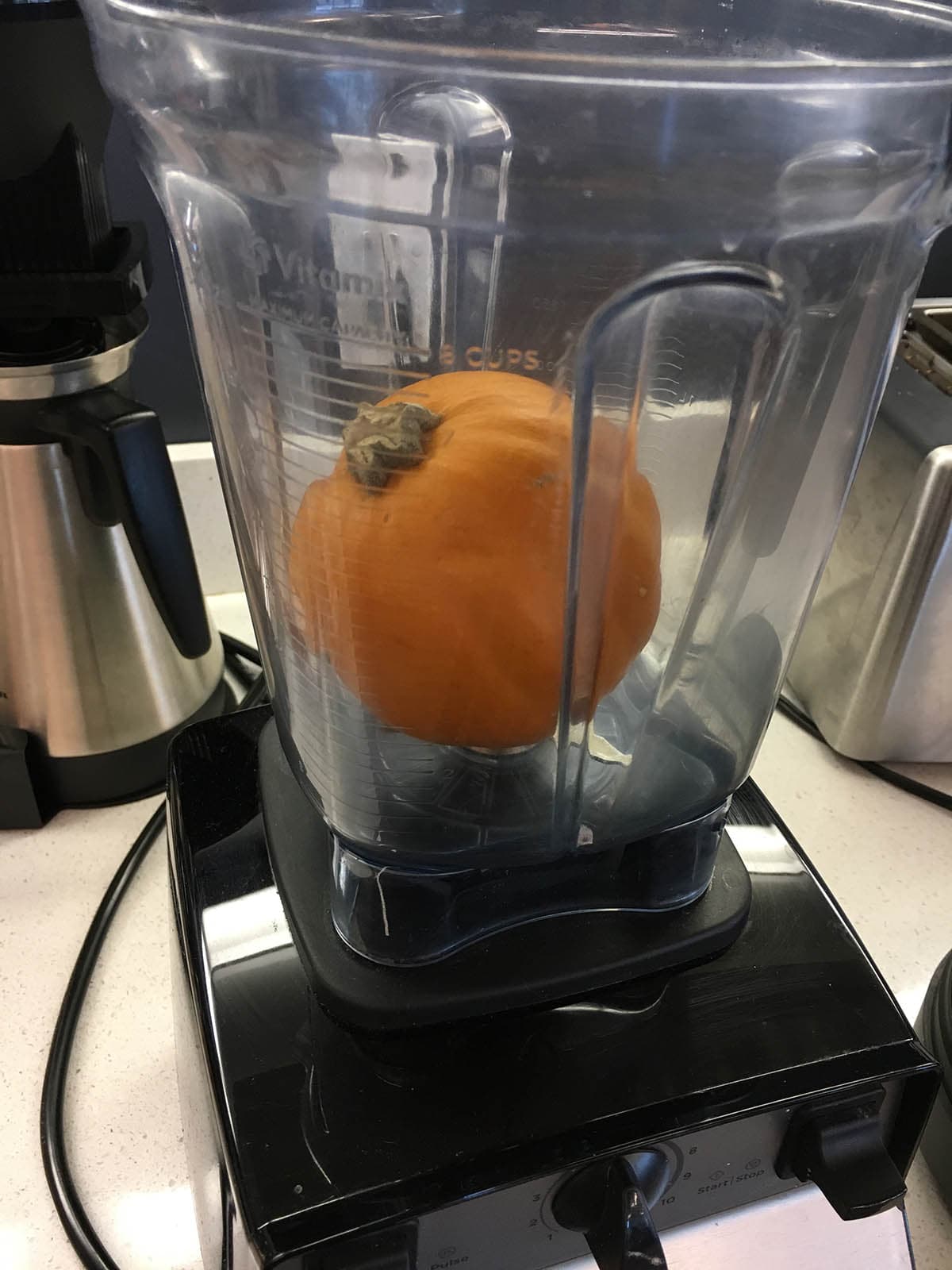
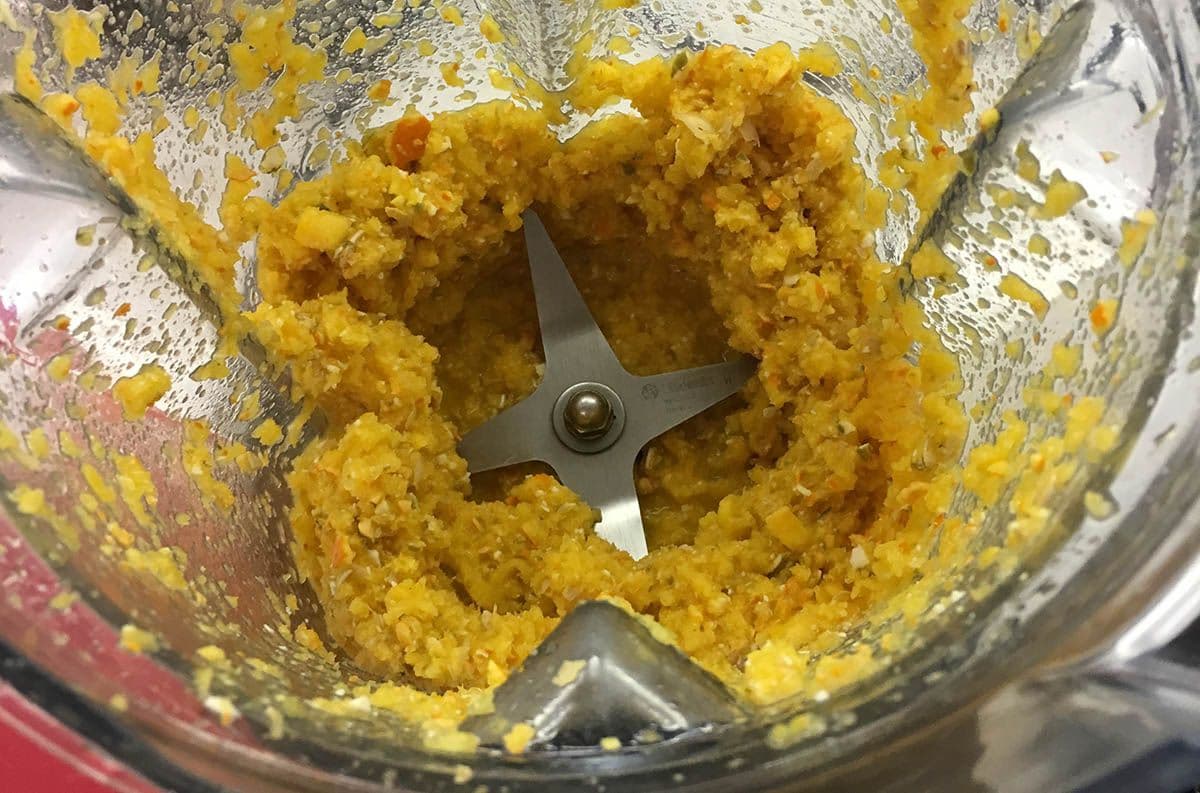
Step 2: Soapy cell lysis
To get to the DNA, we’ll use the detergent in dish soap to break open the cell membrane and the nucleus to free all of the DNA from the cell (along with the RNA, proteins, and so on). In science, we call this process of breaking open the cell “lysis.”
Prepare your “lysis solution” by combining ½ cup of water with 2 teaspoons of dish soap and 1 teaspoon of table salt. Mix until the salt is dissolved.
In a clean glass, add 2-3 tablespoons of lysis solution to 1 tablespoon of pulverized pumpkin paste. Mix by stirring together. The mixture should be more soupy than pasty—if not, add a bit more lysis solution.
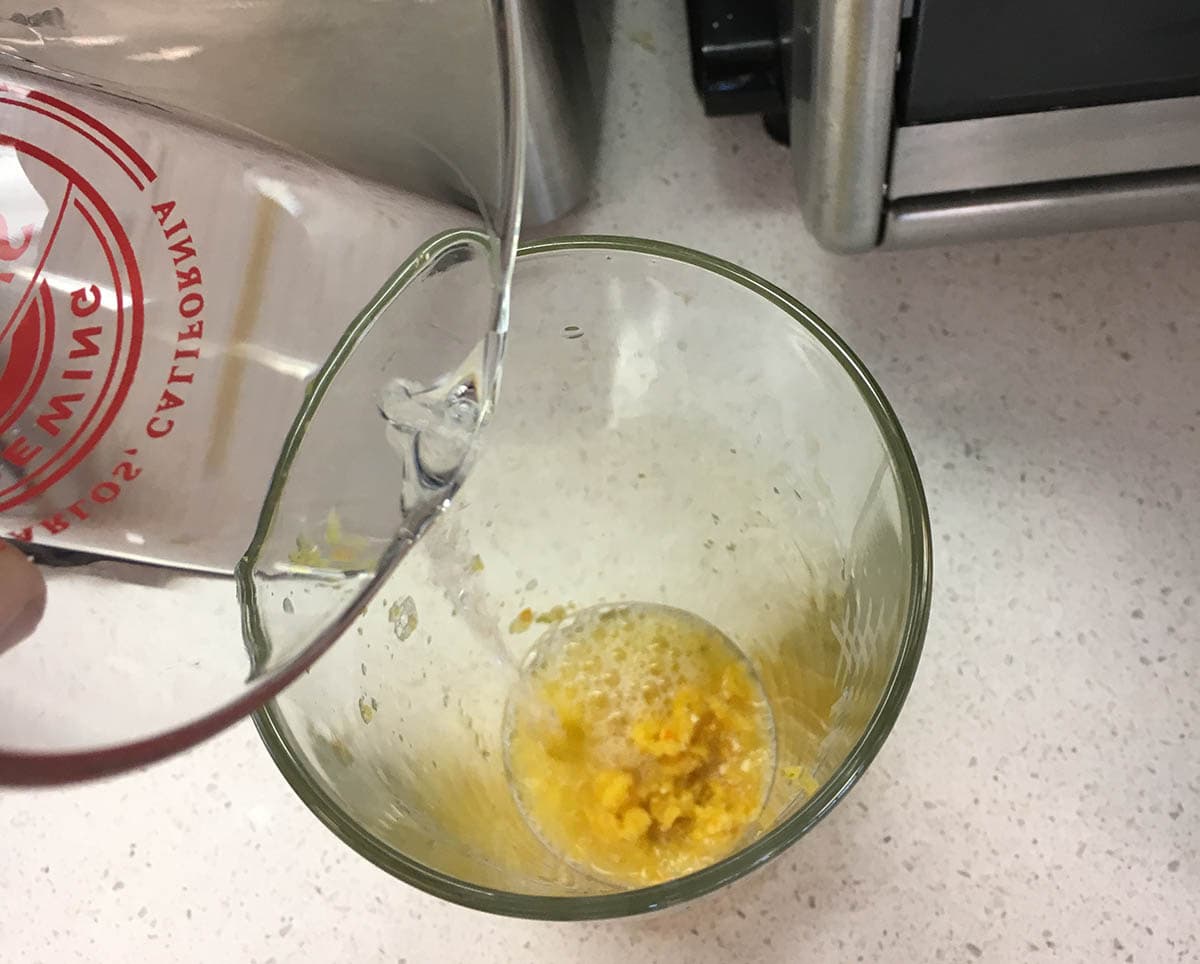
Step 3: Filtering
Now that all of the DNA is released into our soapy pumpkin mixture, we need to filter out the solids. Place a coffee filter (or cheesecloth or other strainer) over a clean glass and transfer everything into the filter (you may want to use a funnel or other strainer, or just carefully hold the filter with your fingers; if the filter rips or falls over, just transfer everything into a fresh filter over a new cup).
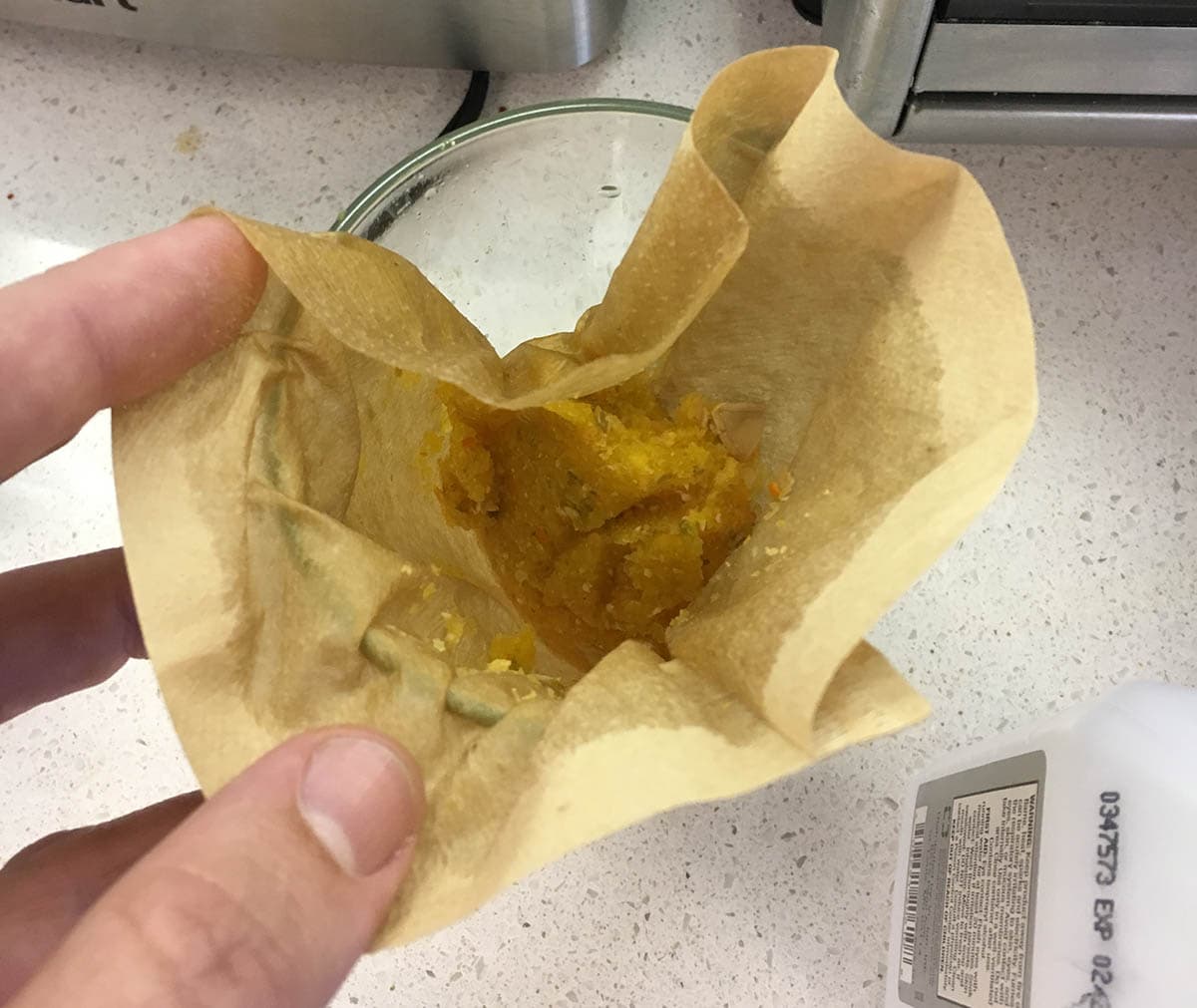
Step 4: Presto!
After filtering, you should have an orange liquid (it may be opaque but should not have any chunks, like no-pulp orange juice). Our pumpkin DNA is dissolved in this liquid, and we’ll use alcohol—with help from the salt from earlier—to make it “precipitate.”
Tilt the glass and slowly add an equal amount of rubbing alcohol to the orange liquid, so that a layer of alcohol sits on top of the liquid pumpkin extract. If everything has worked, you’ll see fluffy white DNA come out of solution and sit between the alcohol and extract layers! If you don’t see anything happening, try making a new batch of lysis solution, making sure that you have the correct amount of soap and salt. Also check that your rubbing alcohol is 99%—lower concentrations won’t work as well.
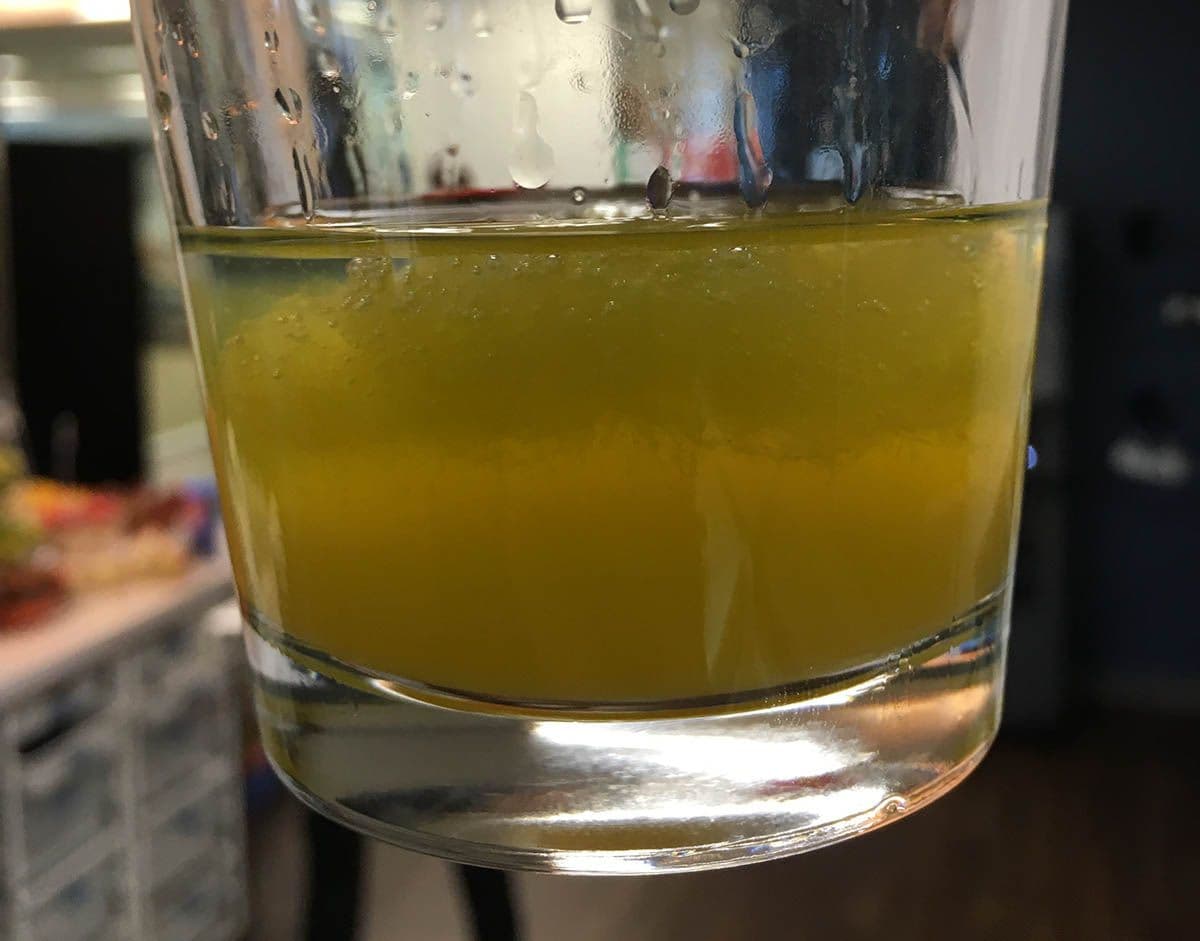
If you want, you can swirl the DNA around with a thin stick or straw, and transfer to another container of rubbing alcohol, to save and display.
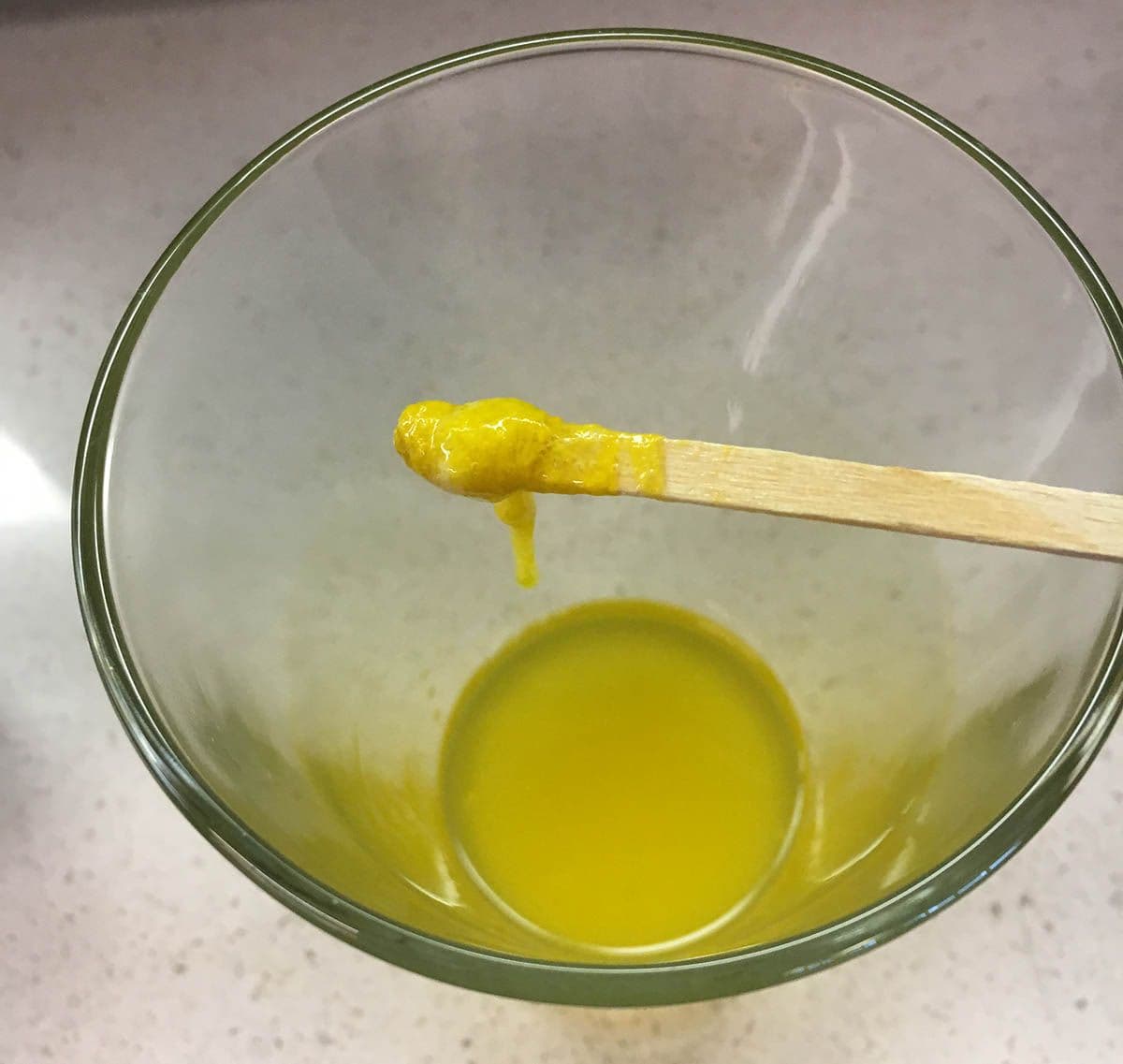
If you thought extracting DNA from pumpkins was fun, try other fruits or vegetables in your kitchen. Can you make a strawberry-banana DNA smoothie? (Don’t drink it, of course!)
The difference between science and messing around is note-taking, so write down your observations. Take pictures and share them with us on Twitter!